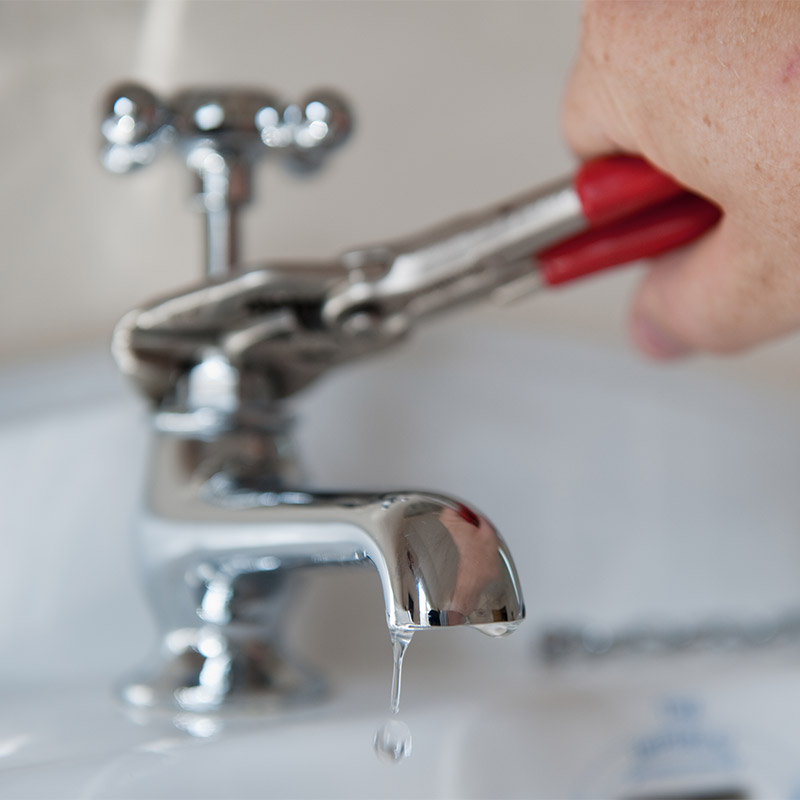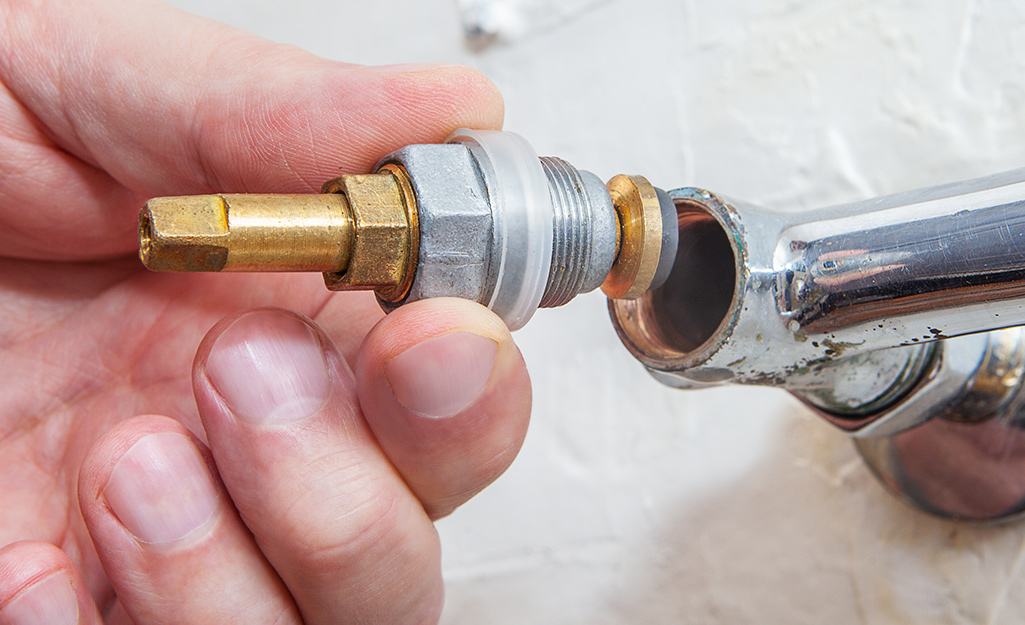An Value of Resolving a Leaking Faucet
An Value of Resolving a Leaking Faucet
Blog Article
The publisher is making a number of great points relating to Should I Repair or Replace a Leaky Faucet? in general in this great article below.

Dripping taps might feel like a minor trouble, yet their influence goes beyond just the annoyance of the sound. From drainage to sustaining unnecessary financial costs and health threats, overlooking a leaking faucet can bring about different consequences. In this post, we'll explore why it's crucial to resolve this common house problem without delay and properly.
Wastage of Water
Ecological Impact
Leaking taps add substantially to water wastefulness. According to the Environmental Protection Agency (EPA), a solitary tap dripping at one drip per second can throw away more than 3,000 gallons of water per year. This not only strains water resources however additionally influences ecosystems and wildlife based on them.
Financial Expenses
Raised Water Costs
Beyond the ecological influence, trickling faucets can inflate water bills significantly. The collected wastefulness with time converts right into greater utility expenses, which could have been prevented with timely repair work.
Potential Residential Property Damages
Additionally, extended leaking can result in damage to fixtures and surfaces bordering the tap. Water buildup can trigger discoloration, deterioration, and even structural issues if left neglected, leading to additional repair service costs.
Wellness Issues
Mold And Mildew and Mildew Growth
The constant existence of dampness from a dripping faucet develops an optimal setting for mold and mildew and mildew growth. These fungi not just endanger interior air top quality yet also position health and wellness dangers, specifically for people with respiratory system problems or allergic reactions.
Waterborne Conditions
Stagnant water in dripping faucets can become a breeding ground for bacteria and various other virus, raising the danger of waterborne illness. Contaminants such as Legionella microorganisms prosper in stagnant water, potentially bring about severe diseases when ingested or breathed in.
DIY vs. Professional Fixing
Advantages and disadvantages of Do It Yourself Repair
While some might attempt to take care of a trickling faucet themselves, DIY repair services feature their very own set of challenges. Without appropriate understanding and devices, do it yourself efforts can worsen the problem or bring about insufficient fixings, prolonging the problem.
Benefits of Hiring a Professional Plumber
Hiring a professional plumber ensures that the underlying cause of the dripping tap is resolved efficiently. Plumbings possess the proficiency and equipment to detect and repair faucet concerns effectively, conserving time and lessening the threat of more damage.
Step-by-Step Guide to Fixing a Dripping Faucet
Tools Required
Before attempting to fix a leaking faucet, collect the essential devices, including a flexible wrench, screwdrivers, replacement components (such as washers or cartridges), and plumber's tape.
Common Tap Issues and Their Solutions
Determine the type of tap and the specific problem causing the drip. Typical troubles include damaged washers, corroded shutoff seats, or defective O-rings. Refer to supplier instructions or on the internet tutorials for detailed guidance on repair services.
Safety nets
Regular Maintenance Tips
To avoid leaking taps, execute routine upkeep such as cleansing aerators, inspecting for leaks, and replacing worn-out parts quickly. Furthermore, think about setting up water-saving gadgets or upgrading to much more efficient fixtures.
Value of Prompt Fixes
Attending to leaking faucets as quickly as they're noticed avoids additional water waste and possible damage, ultimately conserving both water and cash over time.
Impact on Home Value
Assumption of Well-Maintained Home
Maintaining a property in good condition, consisting of addressing upkeep concerns like leaking taps, enhances its regarded value and charm among prospective customers or tenants.
Influence on Resale Worth
Characteristics with properly maintained plumbing components, including faucets, command greater resale values in the realty market. Addressing dripping taps can contribute to a favorable impact throughout property inspections and settlements.
Ecological Responsibility
Specific Payment to Preservation
Taking obligation for dealing with trickling taps lines up with wider efforts towards water preservation and environmental sustainability. Every person's actions collectively make a considerable effect on protecting priceless sources.
Lasting Living Practices
By focusing on punctual fixings and taking on water-saving behaviors, people add to lasting living practices that benefit both existing and future generations.
Verdict
Resolving a leaking faucet goes beyond plain ease; it's an essential action toward conserving water, reducing economic expenses, and safeguarding health and property. Whether via DIY repairs or expert assistance, doing something about it to repair trickling faucets is a little yet impactful way to promote liable stewardship of resources and add to a healthier, extra sustainable future.
How to Fix a Leaky Faucet: Step-by-Step Repair Guide
A leaky faucet may seem like a simple annoyance, but if it's not fixed promptly, that leak could cost hundreds to potentially thousands. From water damage to mold, mildew, and high water bills, even a tiny leak can be catastrophic if left unattended. Damage like this can even affect the overall value of your home, so it's important to take the right approach for leaky faucet repair. You may need the help of a plumber in some cases, but we've got a few tips you can try on how to fix a leaky faucet before calling the pros.
Four Faucet Types
When you're learning how to fix a leaky faucet, the first step is knowing what kind of faucet you're working with! There are four common types.
Cartridge Faucets
Cartridge faucets come in one- or two-handled varieties. In one-handled cartridge faucets, hot and cold water combines in a single cartridge. In the two-handled versions, hot and cold water are controlled separately and mixed in the faucet.
Ball Faucets
Ball faucets have a single lever you push up and down to adjust the pressure and rotate to change the temperature. A slotted metal ball controls the amount of water allowed into the spout.
Compression Washer Faucets
They're the oldest type of faucet, but they're still used in many homes — especially older ones. Compression faucets have two separate handles that, when turned, raise or lower the washer that seals a water valve. This valve stops water from flowing through the faucet when it is turned off.
Disc Faucets
Disc faucets rarely need to be repaired due to their maintenance-free design. The water flow is controlled by two discs — the upper one raises and lowers against a fixed lower disc, creating a watertight seal. If your disc faucet starts leaking, you may need to replace the seals or clean residue buildup from the inlets.
Fixing a Leaky Faucet
Step 1: Turn Off the Water
Whether you're learning how to fix a leaky bathtub faucet or how to fix a leaky kitchen faucet, always turn off the water supply to your working area when you're fixing a leak. The last thing you want is a flood added to your list of things to fix.
Look for the shutoff valves below your sink or around the tub and turn them clockwise to stop the water flow. If your faucet doesn't have shutoff valves, you may need to turn off the water for the whole house. Check to make sure it's off by turning the faucet on. If nothing comes out, you're ready to start the repair.
Step 2: Take Apart the Faucet
How you disassemble your faucet depends on the type of fixture you have. You can use a flathead screwdriver to remove the caps on top of the handle or handles for cartridge and compression faucets. Inside, you should see handle screws. Unscrew these with a screwdriver to remove the handle.
Disc- and ball-style faucets will typically have an inlet screw near the handle, and removing that will reveal the interior of the faucet.
Detach the Valve Stem
For cartridge- and compression-style faucets, you'll see the inner valve stem or cartridge once you remove the faucet handles. If you have a compression faucet, unscrew the brass valve stem. If you have a cartridge faucet, pull out the cartridge. If your cartridge has been in place for a while, it may require some tools or extra force to remove it due to mineral deposits.
Examine and Replace Parts
Once you've removed the parts, check them out to confirm what needs to be replaced. You may see corroded rubber washers, O-rings, stems, or cartridges. On a ball-style faucet, check the seats and springs for damage.
If you need to repair a leaky disc faucet, check the inlet and seals on the lower disc.
Once you determine what parts must be replaced, visit your local hardware store. Bring the damaged parts with you to ensure you can purchase the correct components to replace them.
Clean Valves and Faucet Cavity
If you've removed a stem or cartridge, you may notice mineral buildup in the faucet's threads. Use white vinegar to clean the valve seat by soaking it for a few minutes, then scrub it away with a soft toothbrush and rinse with warm water. You can also clean the interior of the faucet in the same way.
Reassemble the Faucet
Once your faucet is cleaned and the required parts have been replaced, it's time to reassemble it. Put the pieces back together and slowly turn the water supply back on. Doing this slowly is crucial because too much initial water pressure can damage the new hardware you've just installed.
https://homewarranty.firstam.com/blog/how-to-fix-leaky-faucet

I hope you enjoyed reading our topic on What Causes Leaky Faucets & How To Fix Them. Thank you so much for taking a few minutes to read through our post. Do you know about someone else who is curious about the topic? Take a moment to promote it. Thank-you for going through it.
Report this page